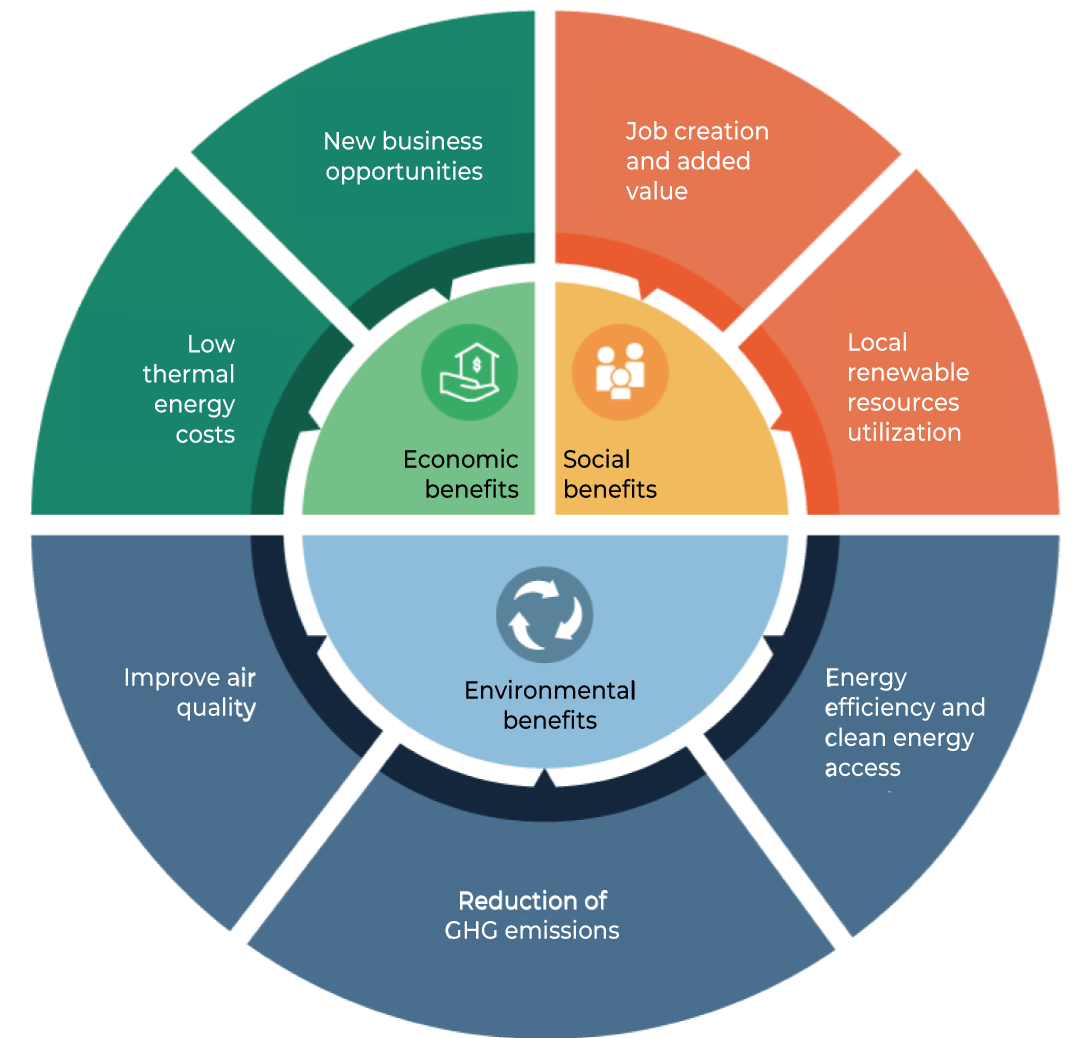District energy encompasses the concepts of “district heating” and “district cooling”, being the first best known in our country. District heating supplies heating and/or domestic hot water to the group of buildings connected to the network, while district cooling supplies cooling and/or air conditioning to the buildings.
Low thermal
energy costs
District energy has multiple benefits for the different stakeholders (end-users, energy developers, local governments, and of course, the country). The benefits can be categorized into economic, environmental, and social.

Más información sobre los beneficios de la
Energía Distrital para los usuarios en esta Guía.
District Energy
How to connect to a district energy system?
While it isn’t yet a widespread reality in Chile, it’s expected that in the short and medium term, large-scale district energy projects will begin to be deployed in the country, allowing the development of the market and massification of the technology. If district energy networks are available for connection, currently or in the future, existing users can be classified into two types of connection: those with a centralized heating or cooling system and those without.
Within co-ownership projects, there is an opportunity for the real estate sector to enhance the value proposal to end-users with highly efficient and sustainable solutions to supply heating, domestic hot water, and/or cooling to the buildings.
The technologies exist, have been improving for decades, and have been adapting to the needs of new urban developments. For more information on mature technologies and how to connect to a District Energy System, visit this Guide (in Spanish).

Projects within a Co-Ownership: correspond to projects that supply thermal energy to a series of buildings (residences or others), where the layout of the thermal energy distribution is entirely included within private property. They generally correspond to smaller-scale projects that are built in conjunction with the construction of co-owned buildings.

Projects using national assets for public use: correspond to projects that supply thermal energy to a series of mixed buildings where the layout of the thermal underground network uses or crosses assets for public use such as streets, highways, sidewalks, urban squares, etc. These projects are generally larger in scale and present other challenges, such as negotiating with different clients and applying for concession permits.



















